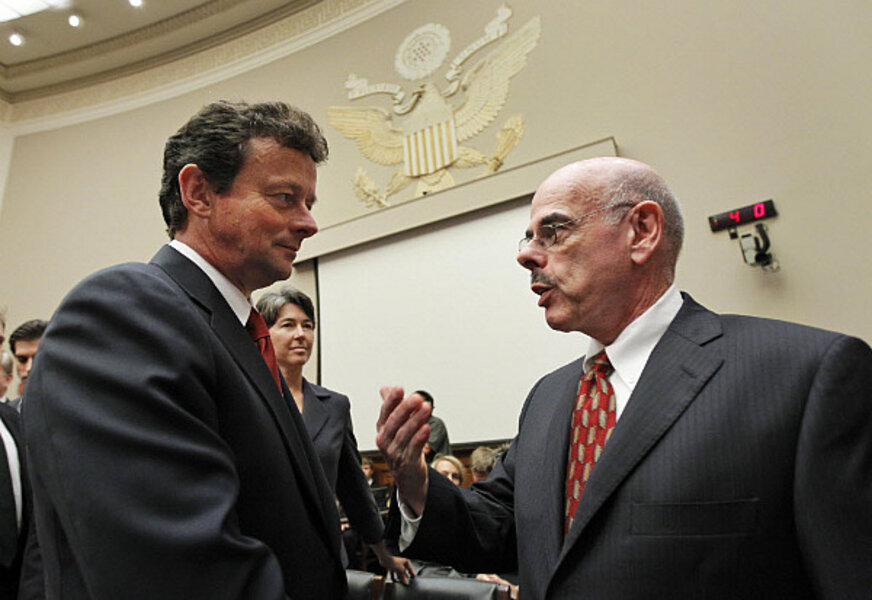Five crucial moves by BP: Did they lead to Gulf oil spill disaster?
Loading...
| Washington
BP made five crucial decisions in the name of saving money that may have contributed to the catastrophic Deepwater Horizon oil spill, according to top Democrats on the House Energy and Commerce Committee.
Prior to the April 20 disaster, the Deepwater Horizon rig was behind schedule in drilling BP’s Macondo well, according to internal e-mails and documents examined by committee staff. This may have increased pressure on executives to take shortcuts so the well would be producing as soon as possible.
IN PICTURES: Companies that have paid big for environmental disasters
According to a June 14 letter to BP Chief Executive Tony Hayward from Committee chairman Rep. Henry Waxman (D) of California and investigations subcommittee chairman Rep. Bart Stupak (D) of Michigan, the five important decisions made by BP that lawmakers are investigating are:
1. Well design
On April 19, BP installed the final steel tubing in the well, according to House investigators. They chose a cheaper approach which involved dropping in a full string of casing that lined the well from top to bottom. A BP plan review in mid-April had recommended a more involved approach that would have installed the casing in sections and used “tiebacks” to help prevent gas from seeping up around the steel tubes.
2. Insufficient 'centralizers'
When installing the final steel casing, it is important to run the tube down the center of the wellbore hole, to ensure ease of sealing the casing around its entire diameter. BP used only six centralizers to accomplish this task, as opposed to the 21 recommended by subcontractor Halliburton, according to the House letter to Hayward.
3. Failure to run a key test
BP did not run a nine- to 12-hour procedure called a “cement bond log” to assess the integrity of the cement seal around the well casing, according to the House panel, despite a Halliburton prediction of severe gas flow problems. A crew from subcontractor Schlumberger was on the Deepwater Horizon rig on the morning of April 20 to carry out this test, but they left after BP officials told them they were not needed.
4. Improper mud circulation
Wells are generally filled with weighted mud during drilling. According to the House, the American Petroleum Institute recommends that oil firms fully circulate the mud from the bottom of the well to the top prior to beginning the process of cementing the tube. This allows the testing of the mud for gas influxes and debris removal. BP conducted only a partial circulation of the drilling mud, according to the House Energy panel.
5. Failure to secure wellhead
The wellhead on the sea floor was the last barrier to a dangerous upward-rising flow of gas. BP did not secure the wellhead with a lockdown sleeve that would have prevented it from being blown out by pressure from below, according to the House.
The House Energy and Commerce panel’s letter to BP's Mr. Hayward concluded that “time after time it appears BP made decisions that increased the risk of a blowout to save the company time or expense.”
Asked about these conclusions at a Thursday House hearing, Hayward declined a specific answer, saying that he would await the results of thorough investigations before drawing his own conclusions.
“We need to determine what were the crucial decisions,” said Hayward, adding that the five areas identified by House investigators “are legitimate areas for concern.”
IN PICTURES: Companies that have paid big for environmental disasters
Related:
In Waxman, BP execs face a master interrogator at Gulf oil spill hearing
Hayward testimony: BP contrite, but not ready to take all blame
BP oil spill: MMS shortcomings include 'dearth of regulations'





